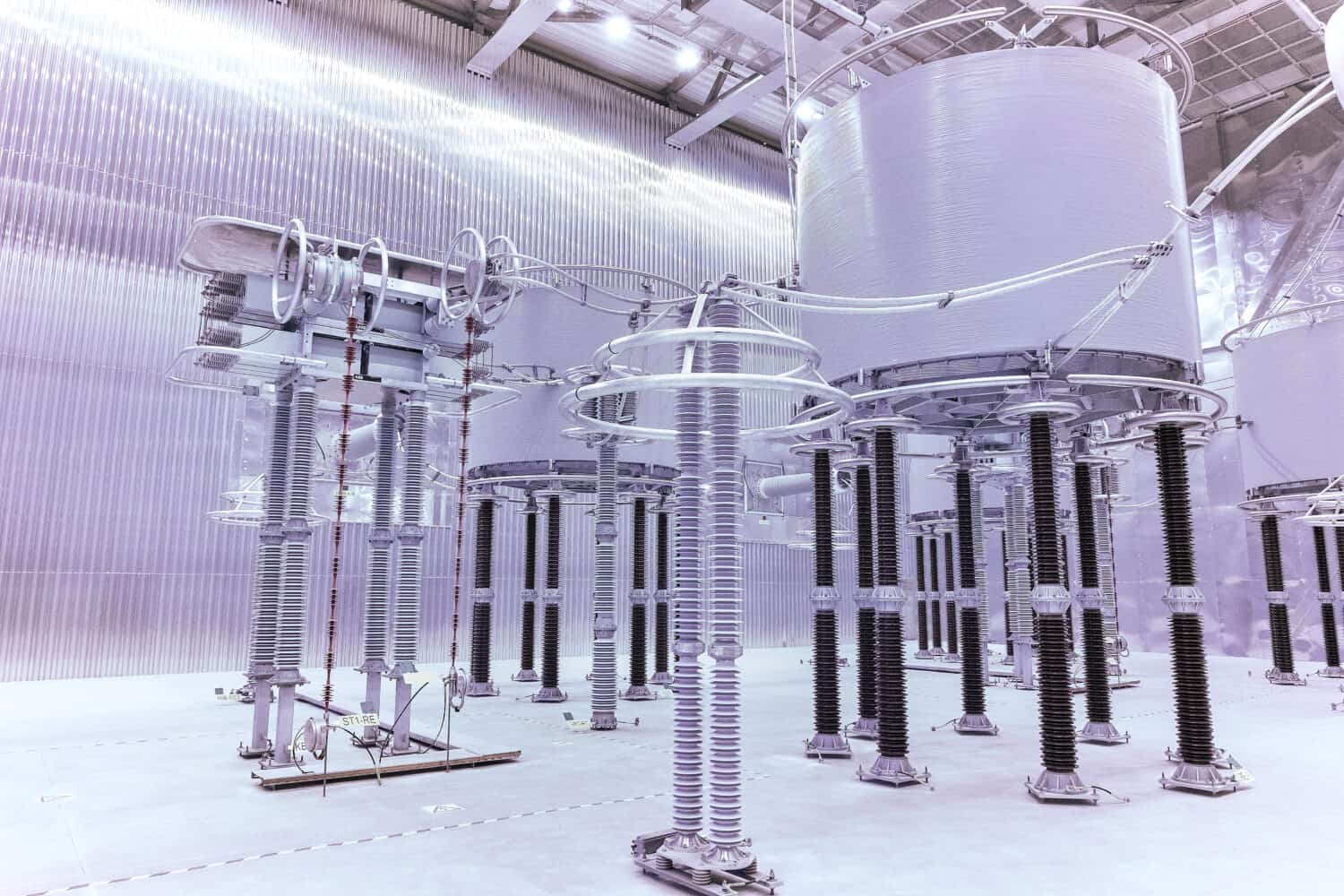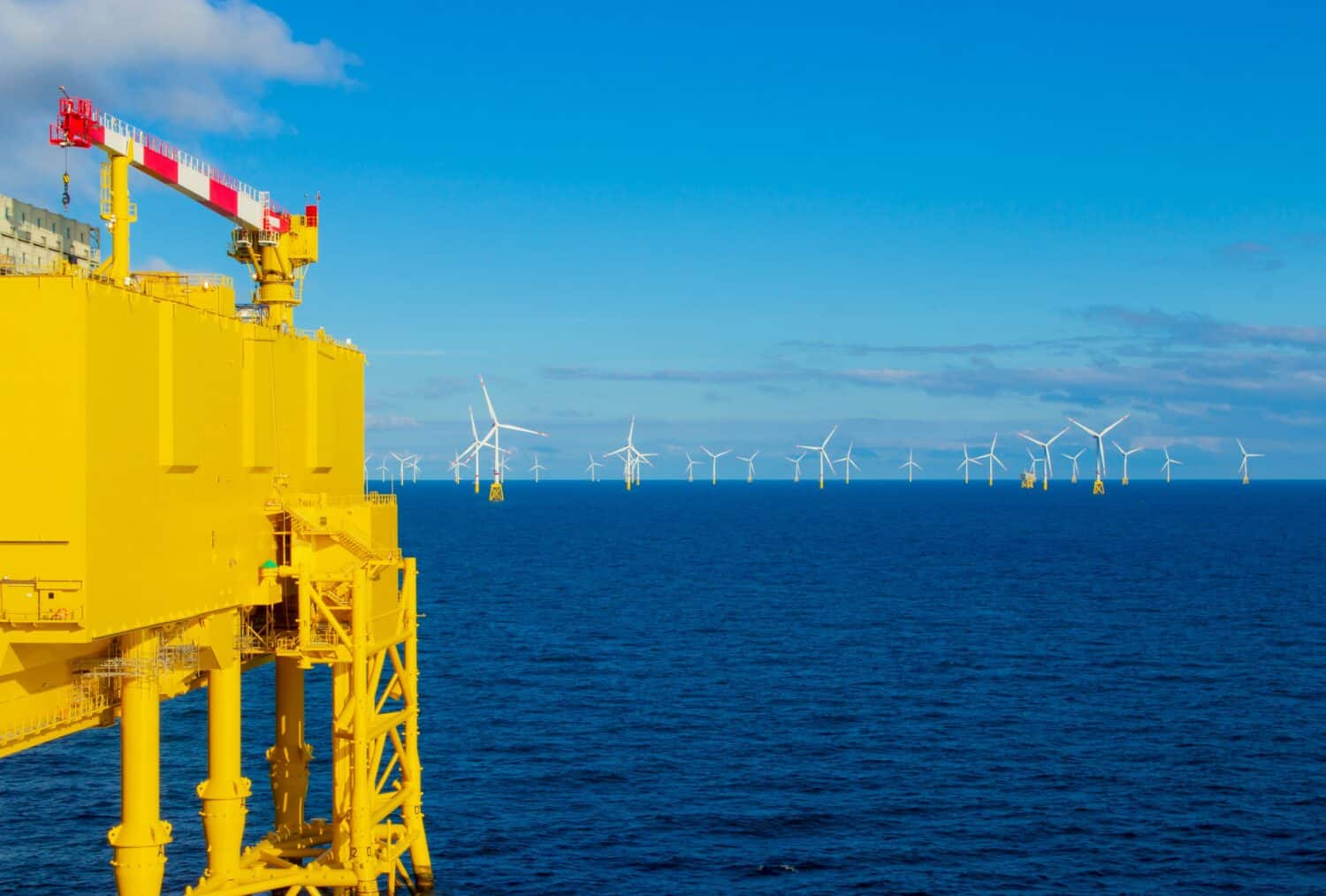The biggest transformer on earth was installed in China in 2018. It utilizes high-voltage direct current (HVDC) technology to transmit power efficiently over 3,324km. Subsequently, it experiences fewer voltage fluctuations and minimal transmission losses. The transformer has a 1,100KV capacity and can transmit 12GW of power, up from 10GW.
It’s a transformer that has revolutionized electricity transmission and set high standards. Yet, like many people, you might not know how it works. So, what’s the technology behind this transformer? How is it able to transmit power over long distances efficiently? Can it utilize submarine cables in power transmission?
Knowing how power transmission works is critical whether or not you’re an electrical engineer. This article takes you through background information on the development of the HVDC transformer. It also explains the technology behind this transformer and how it’s beneficial.
What’s the Biggest Transformer in the World?
The world’s largest transformer by capacity is a Siemens product. Siemens designed the 1,100KV transformers to transmit power to distances of over 600km. Executing such a massive project was only possible given the company’s extensive experience with HVDC systems. According to the Vietnam Transformer, Siemens made the transformers in its Nuremberg factory. The transformer built for the State Grid Corporation of China (SGCC) can transmit up to 587MVA. Therefore, it’s the single largest HVDC system in the world.
Building these transformers hasn’t been a walk in the park for Siemens. It all started in 2016 when the Chinese made an order to build such a transformer. One year later, it had designed and built the first transformer. In a revolutionary move, the company created a transformer to transmit power for 3,284km. It transmits power between Changji and Giguan. Data from Siemens Energy indicates the dimensions of the transformer to be 37.5 meters long, 12 meters wide, and 14.4 meters high.
Siemens designed the HVDC converter station using VACUTAP® VR®, an on-load tap-changer. Therefore, its HVDC transmission system is very reliable in protecting the system against possible voltage overload. Plus, VACUTAP® can perform up to 300,000 tap-change operations before maintenance. It’s found in each remotely-located converter station. Consequently, SGCC technicians need only to undertake minimal maintenance over prolonged periods.

©Audrius J/Shutterstock.com
Why Is the Biggest Transformer Unique?
The biggest transformer in the world is unique for several reasons besides its massive size. It also transmits the largest voltage of power hitherto witnessed anywhere in the world. Besides, it’s a complete system with a converter station and several HVDC transformers. According to ReinHausen, the following are the reasons why this is the largest transformer system and the most unique.
- Size: Each of the 28 HVDC transformers built for the SGCC measures 37.5m long, 14.5m high, and 12m wide.
- Weight: Once installed and fully operational, one single-phase 1,100KV transformer weighs 909 metric tons.
- Capacity: Each HVDC transformer can transmit up to 587.1MVA of power and 12MV.
- Distance: The HVDC transformers can transmit power over a total distance of 3,284km.
- Efficiency: The HVDC transmission system has efficiency levels of up to 99 percent, which is much better than AC systems.
What’s the Technology Behind the Biggest Transformer?
The biggest transformer in the world works with the HVDC technology. In full, HVDC is a high-voltage direct current. It completely departs from the predominant high-voltage alternating current (HVAC) power systems. While an HVDC system transmits direct current, it requires inversion to alternating current at the terminal. HVDC power transmission converts AC to DC, then DC to AC. The initial converter station turns AC power into DC before transmission begins. Then the system transmits the DC over long-distance cables, which could also be underwater. The terminal station converts the DC back to AC before feeding it to the grid.
Therefore, the HVDC transmission system requires conversion devices at the initial and terminal stations. It is suitable for long-distance electricity transmission of over 600km. For underground transmission, anything above 50km is desirable. Due to reduced power loss, HVDC systems are more efficient. It works using the following components:
- Converter: The component that converts AC to DC and then DC to AC. It’s composed of inverters and silicon-controlled rectifiers. The rectifier turns DC into AC while the inverter converts DC into AC.
- Electrodes: Electrodes are conductors connecting the system and the earth.
- Smoothing Reactors: Smoothing conductors are inductors that connect in series to the poles of the converter stations. They reduce harmonics, avoid breaks in the current, and prevent commutation failures in the inverters.
- DC Lines: These could be overhead lines of underground cables carrying power from the source to the final terminal.
- Harmonic Filters: These components maximize the voltage and current harmonics in the system converters.
- Reactive Power Supplies: These shunt capacitors compensate for the reactive power consumed by converters at the two terminals.
- AC Circuit Breaker: The purpose of the AC circuit breaker is to provide safety whenever there’s a disconnection in the DC link or faults in the transformers.
How HVDC Power Transmission Works
The generating substation creates AC power. A rectifier inside the sending converter station converts AC to DC. An overhead line or an underground cable transmits DC to the final station. Inverters inside the receiving converter station convert DC back to AC, which then flows to the grid. Since the amount of DC sent through the lines equals what’s received at the end, there’s no loss. Therefore, HVDC systems are more efficient.
Benefits of HVDC Power Transmission
One of the biggest advantages of HVDC transformers is that they can transmit power over long distances. They are, therefore, more efficient than HVAC transmission systems. By transmitting power more efficiently, HVDC systems reduce the need to transmit more power. The following are the benefits of HVAC power transmission systems:
1. More Efficient Transmission
The biggest advantage of an HVDC system is transmission efficiency over long distances. When transmitting power in distances over 600km, DC is better than AC. The latter tends to experience extensive losses when transmitting power in bulk. An article in the Proceedings of the National Academy of Sciences (PNAS) puts the optimal distance for AC transmission between 600km and 800km.
The largest transformer globally is 99 percent more efficient. Its power transmission mechanism works better to minimize capacitive losses common in AC systems. HVAC transmitters are less-efficient due to having conductors close to the ground. Therefore, transmitting DC power using overhead lines or underground cables is more efficient.
The following are reasons why HVDC systems are more efficient:
Zero Reactive Power
Instead of reactive power, HVDC power systems mostly have active power. They differ from AC systems, which waste a lot of power. Subsequently, there’s no need to generate additional power to compensate for losses when using HVDC systems.
Less Conductive Materials
AC power lines use bundled conductors to reduce the amount of energy lost due to inherent frequencies. On the other hand, DC transmitters do not require bundled conductors. DC has no frequency and experiences minimal losses.
HVDC Could Be Cheaper
In Some cases, HVDC power transmission infrastructure can be less expensive. After all, they can transmit high-voltage power over extremely long distances. The typical HVDC system can carry a significantly higher voltage than a similarly thick HVAC line. Therefore, HVDC requires fewer and less-bulky power towers, which are more affordable.
2. Enabling the Interconnection of Energy Systems
The purpose of the first of the world’s biggest transformers was to connect two energy systems in China — Changji and Giguan. Thus, it supplies 12GW of power over a record distance of 3,284km. Its capacity is comparable to twelve HVAC power stations. But why are HVDC transmitters better at connecting power systems? HVDC transmission works perfectly in power systems with varied frequencies. Therefore, they do not require the AC power to be the same frequency.
3. Maritime Power Transmission

©TwiXteR/Shutterstock.com
One area where HVAC transmission systems could work effectively is offshore power transmission. Across the world, countries have installed windmills in offshore locations, where overhead power lines could be difficult to implement. China National Offshore Oil Corporation (CNOOC) is perhaps the largest investor in offshore windmills worldwide. In April 2023, Chinese authorities approved the construction of offshore wind farms in the South China Sea. These wind farms will include elaborate HVDC systems to take power to the National Grid.
But why do the Chinese prefer the biggest transformer for such projects? HVDC transformers occupy 30 percent less area and have 50 percent less weight. Installing a 600MW HVDC transformer requires only one acre of space compared to a traditional HVAC converter, which takes up to 4 acres. Therefore, the HVDC transformer has a smaller footprint offshore. Plus, they don’t require overhead power lines. You can transmit power efficiently using submarine cables.
Bringing It All Together
The world’s biggest transformer was designed and manufactured by Siemens for the SGCC. It can transmit power over distances of up to 3,284km. The 1,100KV transformer can support the transmitting up to 587.1MV of power. But the system is bigger than just one transformer — it consists of a converter and up to 28 independent transformers.
One of the major advantages of the transformer system is the efficiency with which it transmits electricity. Unlike the typical HVAC system, HVDC transmitters are 99 percent more efficient. They hardly lose any power and thus do not require the generation of extra electricity to compensate for the loss.
With the world’s largest transformer, submarine power transmission is more efficient. They are, therefore, suitable for offshore windmills. These transmission systems can utilize 30 percent less space, making them less costly. You can also use them to connect two or more power systems regardless of frequency differences. Although these transformers are new, their successful deployment in China, Europe, and America proves their significant benefits.
The image featured at the top of this post is ©Audrius J/Shutterstock.com.







